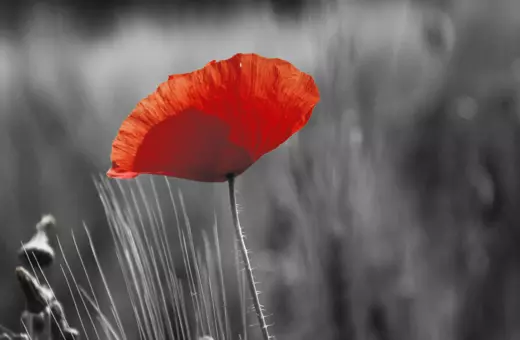Francis Bacon’s art has been leaving audiences curious and revolted since his early success in the 1940s. But the ‘imagination material’, the complex and existential literature and philosophy that inspired his work has often been ignored from his biography. Ben Ware argues that the decay and extinction of his work bleeds into a philosophical view we have overlooked and which heightens his genius.
Encountering Francis Bacon’s art is a troubling experience. What are we to make of the mutilated faces, the bulging and contorted bodies, and the large fields of colour which enframe the figures? The paintings are clearly important – each exhibiting a certain sublime aura – but how should we read them?
Bacon is certainly not an ‘abstract’ painter, as some critics have argued. Indeed, Bacon himself hated abstraction, describing a room of Rothko’s at the Tate as ‘depressing’ and ‘the most dreary paintings that have ever been made’. He is, as he says in numerous interviews, a ‘figurative painter’. But at the same time, he clearly breaks with conventional figuration, elevating the figure to a new level of disconcerting prominence, depicting the human body in a permanent state of discomfort or agony.
The artist himself had much to say about the ideas behind his image-making. In his famous conversations with the critic David Sylvester, Bacon states that the aim of his works is to make a violent impact upon the spectator’s ‘nervous system’. Eliminating what he calls the ‘story-telling’ aspect of the image, the paintings seek to ‘unlock sensation’, to provoke a convulsive, existential shudder in those who encounter them.
___
The paintings seek to ‘unlock sensation’, to provoke a convulsive, existential shudder in those who encounter them.
___
It is precisely these ideas that are taken up by the philosopher Gilles Deleuze in his 1981 book Francis Bacon: The Logic of Sensation. Here Deleuze argues that Bacon’s ‘painting is of a very special violence. Bacon, to be sure, often traffics in the violence of a depicted scene: spectacles of horror, crucifixions, mutilations and monsters. But these are overly facile detours, detours that the artist himself judges severely and condemns in his work. What directly interests him is a violence that is involved only with colour and line: the violence of a sensation.’ Deleuze therefore distinguishes between sensational violence (the spectacle of mutilations, monsters and screams) and the violence of a sensation (associated with colour and line), which, for him, is the real concern of Bacon’s art. The paintings, he argues, echoing Bacon’s own claims, bypass representation and act directly and violently upon the spectator’s ‘nerves’.
But this emphasis on sensation and affects turns out to be highly problematic. As the philosopher G.W.F. Hegel already reminds us in his Lectures on Aesthetics, ‘the investigation of the feelings which art evokes, or is supposed to evoke, does not get us beyond vagueness.’ In relation to Bacon, then, we might say that by assigning primacy to the viewer’s emotional response to the paintings we are given no sense of what it is that they actually mean, or what it is that compels our enduring aesthetic interest in them.
In an era saturated with explicit and disturbing imagery, it is perhaps now time to dispense with the old modernist aesthetic categories of ‘shock’ and ‘sensation’, and to find new ways of approaching Bacon’s art. These new approaches might well begin by re-focusing on some of the philosophical and psychoanalytic dimensions of the paintings. But how to start thinking in this direction?
___
Their deformity and physical imperfection – appears to be precisely the source of their strength.
___




















Join the conversation